This post was written by Katie Daugherty, Archivist at the Outer Banks History Center.
In celebration of National Aviation History Month, we are sharing the story of Francis Rogallo, an aeronautical engineer for NASA, whose inventions led to him being declared the founding father and patron saint of hang gliding. Inspired by the idea of making flight simple and accessible to the average person, Francis Rogallo, along with his wife Gertrude Sugden Rogallo, developed the flexible wing in the 1940s.
This groundbreaking technology would go on to be used in a variety of professional and recreational pursuits, altering the course of aviation and who had access to aviation, forever.
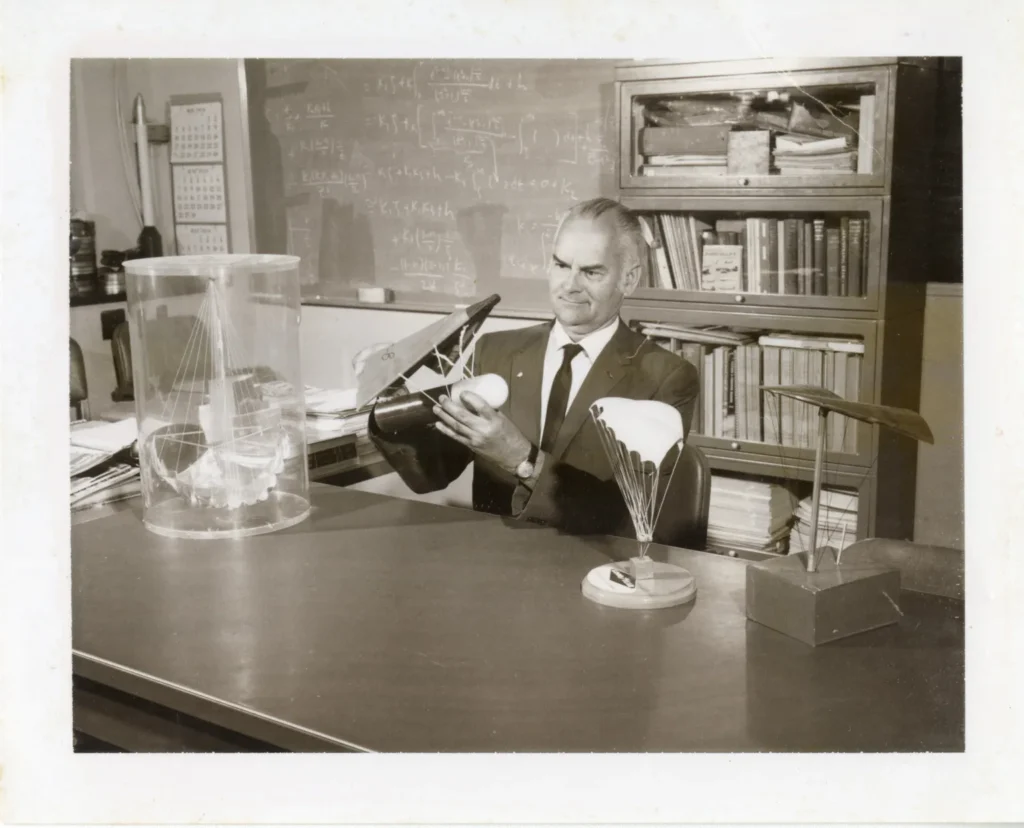
Rogallo in his office, ca. 1960s, PC.5274, Francis Rogallo Papers, Outer Banks History Center.
Francis Rogallo was born in Sanger, California on January 27, 1912. After graduating from Stanford University in 1935, Rogallo joined the National Advisory Committee for Aeronautics (NACA), the precursor to NASA, as an aeronautical engineer. While employed with NACA, Rogallo had the idea to create a new type of lightweight flexible wing that he would later describe as a “marriage of the aerodynamics of rigid wings with the structure of parachutes.”
Originally NACA did not take any interest in developing this new wing, so Rogallo decided to conduct his own research in his spare time.
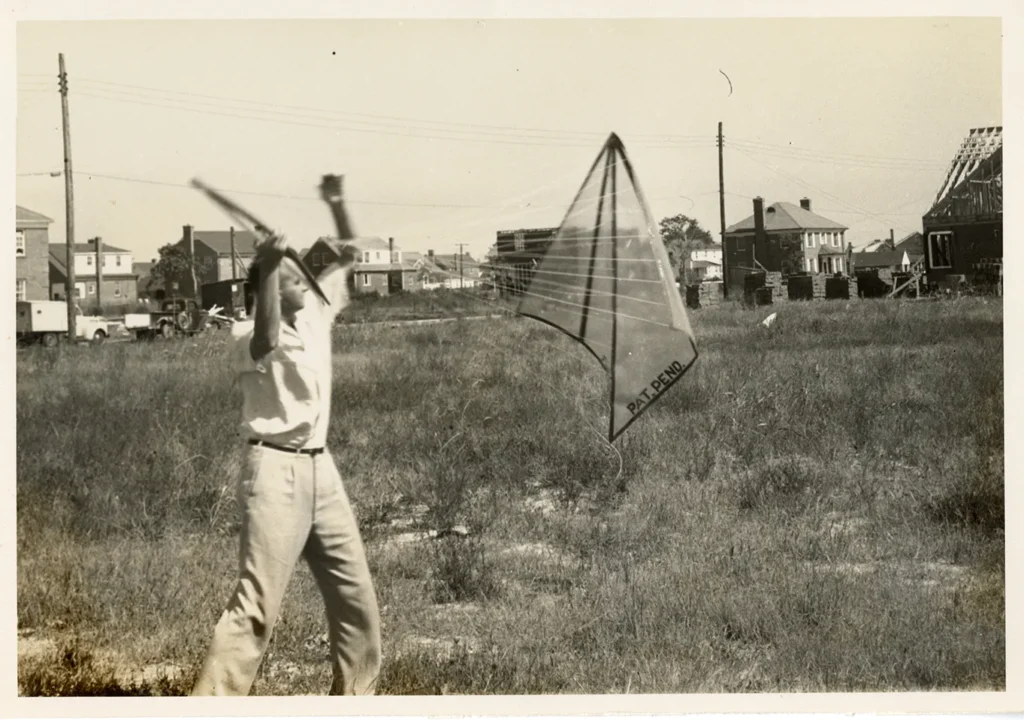
Francis Rogallo testing flying his Flexi-kite, PC.5274, Francis Rogallo Papers, Outer Banks History Center.
Rogallo and his wife Gertrude began work on the flexible wing at home, creating prototypes first out of paper, and then using fabrics from around the house, even building a wind tunnel in their home using a window fan. By 1948, the Rogallos had created a successful prototype, and in 1951 they received a patent for the design. During this period, they developed and sold a toy kite, called the flexi-kite, but the Rogallos continued to dream of other uses for their innovations.
The launch of the Soviet Union’s Sputnik in 1957 and the subsequent formation of NASA created new government interest in Rogallo’s flexible wing paraglider. The Rogallos allowed the government royalty-free usage of their patent, and by the early 1960s, the institution was testing and developing the wing as a possible method of returning space capsules to earth. The paraglider was considered for both Project Mercury and Project Gemini.
Though successful during testing, NASA ultimately decided to abandon the paraglider and use a parachute instead. Research and funding for the flexible wing started to wane in the late 1960s, prompting Rogallo to retire from NASA and return to experimenting with the technology privately.
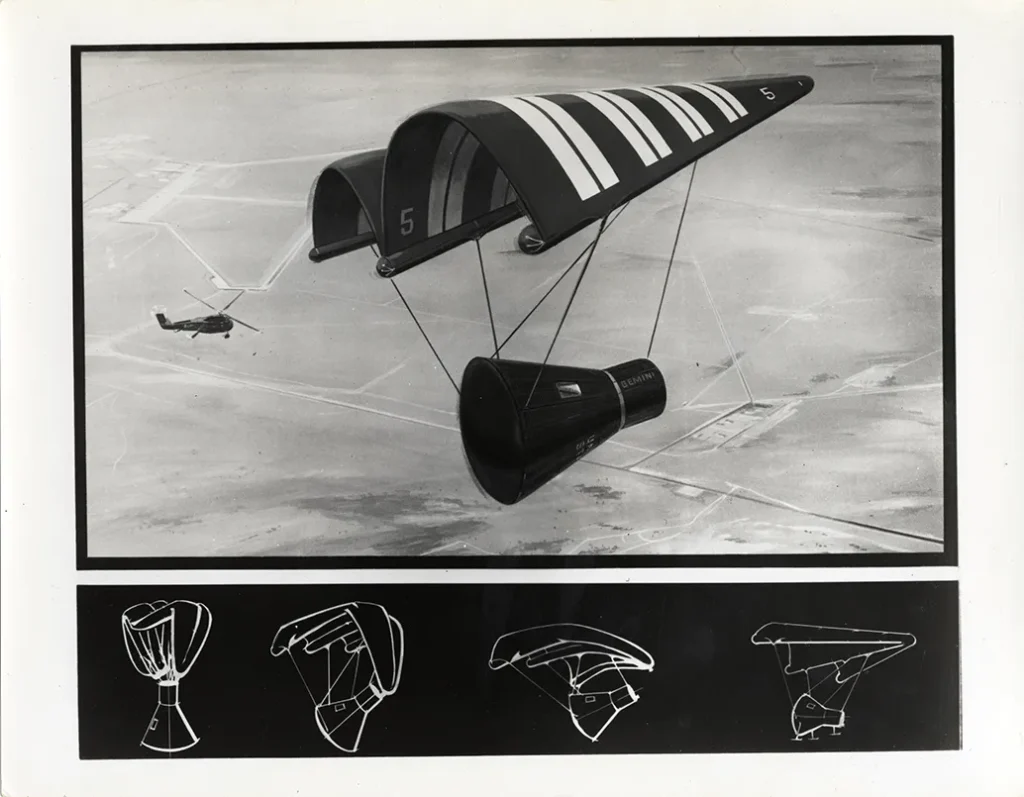
NASA’s Gemini glider concept, PC.5274, Francis Rogallo Papers, Outer Banks History Center
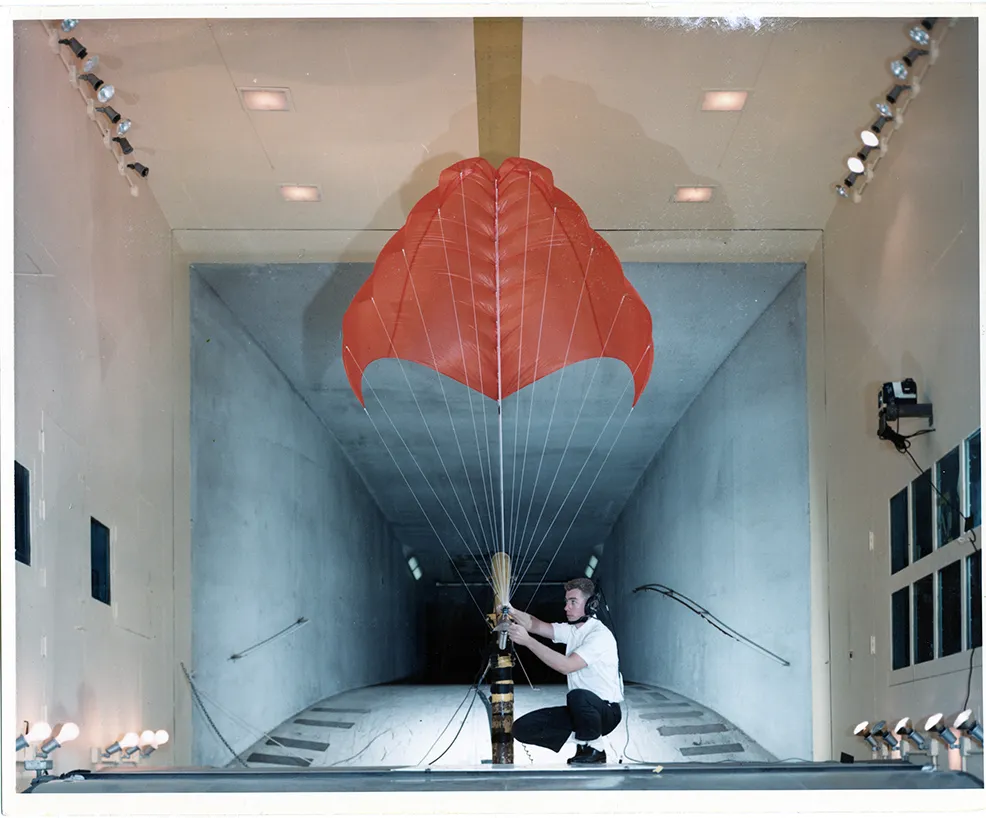
While NASA was busy deciding whether to use the Rogallo wing technology in the Space Race, Francis Rogallo’s original goal of creating an accessible way to fly was being fully realized on the other side of the world. In the early 1960s Australian inventor John Dickenson built a water-skiing kite based on a photograph he had seen of Rogallo’s wing in a magazine. This kite would later be developed for use in hang gliding, ushering in a new age of the hobby, and a steep rise in the sport’s popularity.
Just as Rogallo hoped, his wing had created a simplified, and affordable way for the average person to experience flight.
Upon retirement from NASA, the Rogallos moved to Southern Shores on the Outer Banks of North Carolina. They had previously owned a summer beach cottage nearby where they had often utilized the sea breeze in their experiments. In an article in Wind and Water, Rogallo called the Outer Banks “The kite-flyingest place I ever saw.”
Now living just a few miles from Jockey’s Ridge sand dune, a popular spot for hang gliding and home to the oldest hang-gliding school in the world, Francis Rogallo was able to watch as people utilized his wing technology to take to the sky.
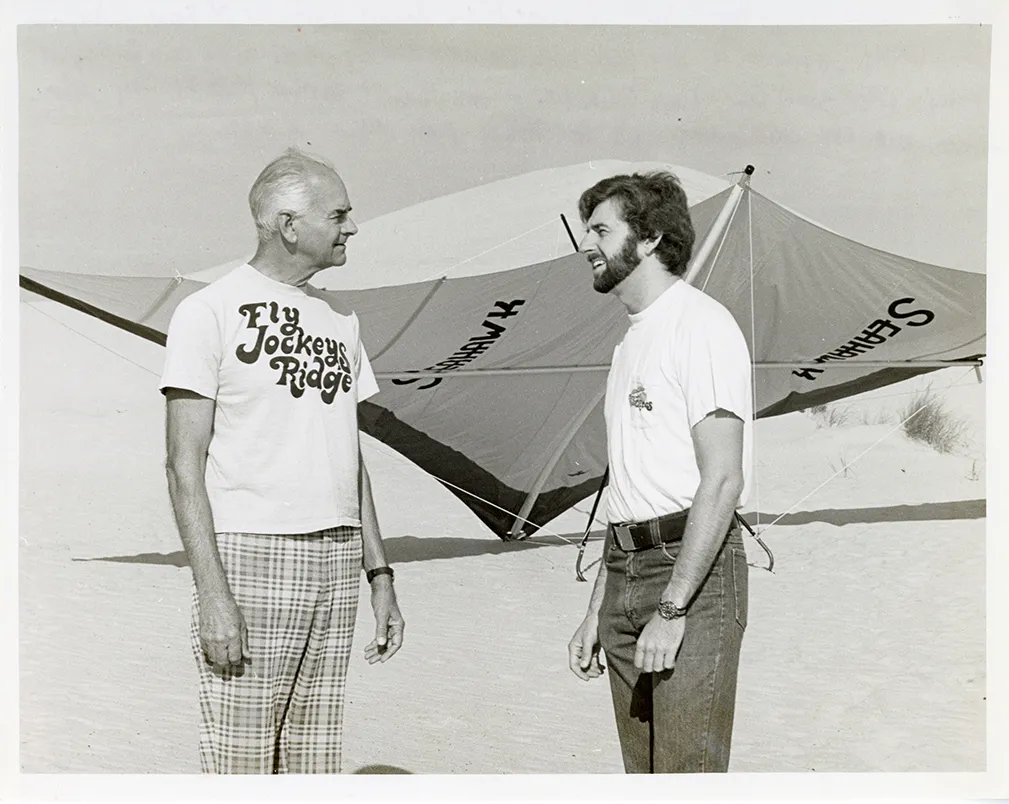
Francis Rogallo and operator of Kitty Hawk Kites, John Harris, 1977, Jockey’s Ridge, Nags Head, North Carolina, PC.5274, Francis Rogallo Papers, Outer Banks History Center.
The technology behind the flexible wing that Francis and Gertrude Rogallo developed during the 1940s has been continuously adapted and utilized by those seeking flight. Along with hang gliding, the flexible wing has been used for kite boarding, paragliding, sport parachuting, and stunt kite flying.
Francis Rogallo was inducted into the North Carolina Sports Hall of Fame in 1987 for his contribution to hang-gliding and received recognition from both NASA and the Smithsonian National Air and Space Museum for his achievements in aerospace technology.
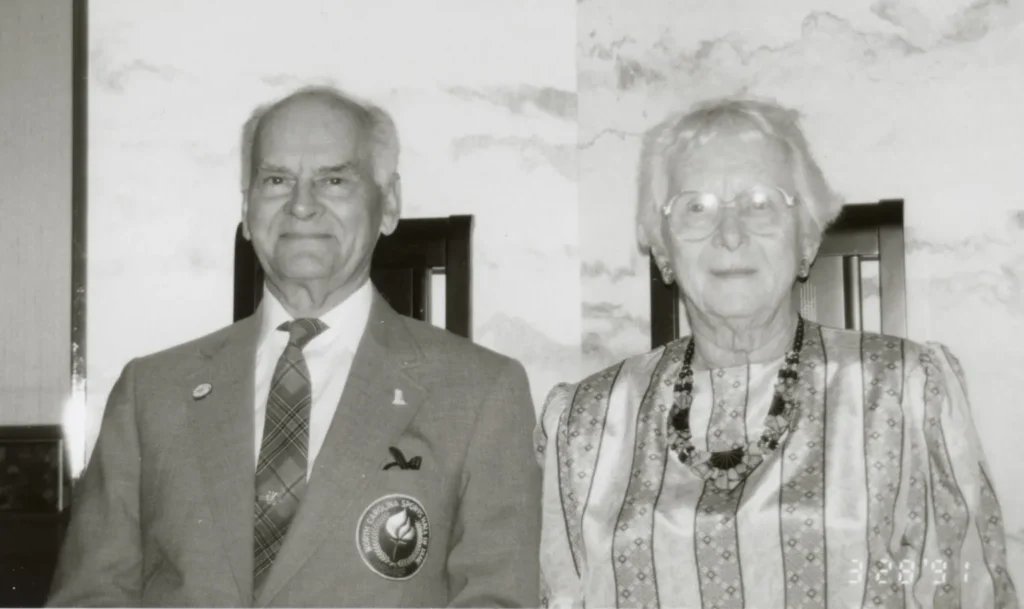
Francis and Gertrude Rogallo, 1991, PC.5274, Francis Rogallo Papers, Outer Banks History Center.
Gertrude Rogallo died in 2008 at the age of 94, and Francis Rogallo died in 2009 at the age of 97. Their legacy lives on through the Rogallo Foundation, a charity based out of Nags Head, North Carolina dedicated to promoting free flight and celebrating the contributions of Francis and Gertrude Rogallo.
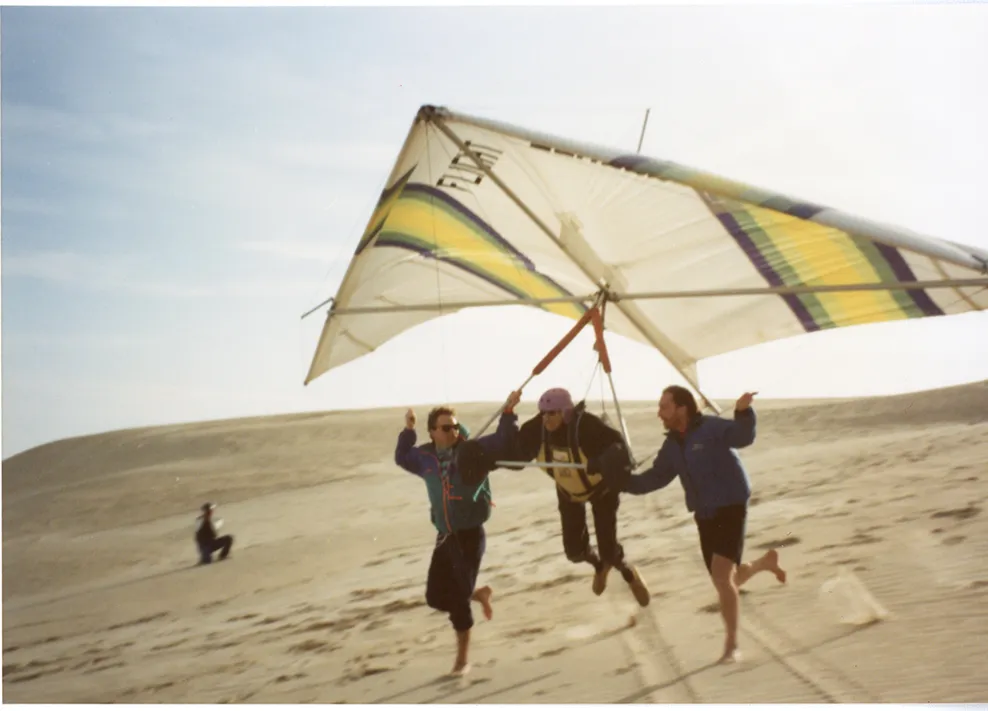
Francis Rogallo Hang-gliding on his 80th birthday, Jockey’s Ridge, Nags Head, North Carolina, 1992, PC.5274, Francis Rogallo Papers, Outer Banks History Center.
